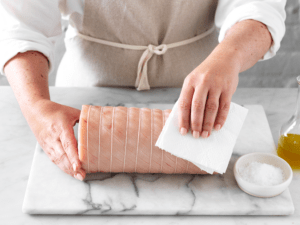
Step 1:
Dry the pork
Drying the rind is essential to achieving the best crackling. Moisture prevents the pork rind from crackling.
Pat the pork dry with a paper towel. Place the pork, rind side-up, onto a plate or tray lined with baking paper and refrigerate, uncovered, overnight to air–dry the rind before roasting. If time does not permit, try to air-dry the pork in the fridge for at least a few hours.
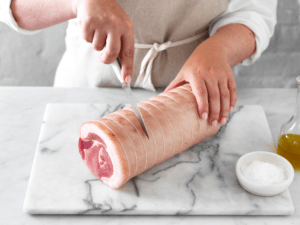
Step 2:
Scoring
Rolled pork loin roasts are sold already scored. Scoring the meat allows the oven’s heat to penetrate for crunchy crackling and helps with carving.
If the rind is not already scored, use a small sharp knife to score the rind at even 1cm intervals (don’t cut through to the meat). You can always ask your butcher to score the rind for you.
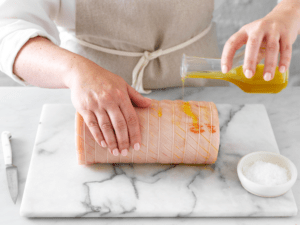
Step 3:
Oil
To help the rind crisp up even more in the oven, drizzle the rind with olive oil and massage it into the rind.

Salt
Then, rub salt over the rind and into the score marks.

Step 4:
Roast
The rind needs a blast of heat to crackle, so preheat the oven to 240°C/220°C fan- forced. Place the pork on a greased rack in a large baking tray. Cook for 40 minutes or until the rind crackles.
Reduce heat to 180°C/160°C fan-forced and cook, allowing 30-35 minutes per kilogram for a rolled pork loin, until just cooked through and the juices run clear (65°C when tested in the thickest part with a meat thermometer).
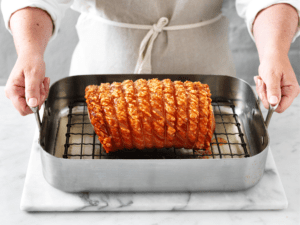
Step 5:
Rest
Remove from the oven. Cover loosely with foil and rest for 10 minutes.
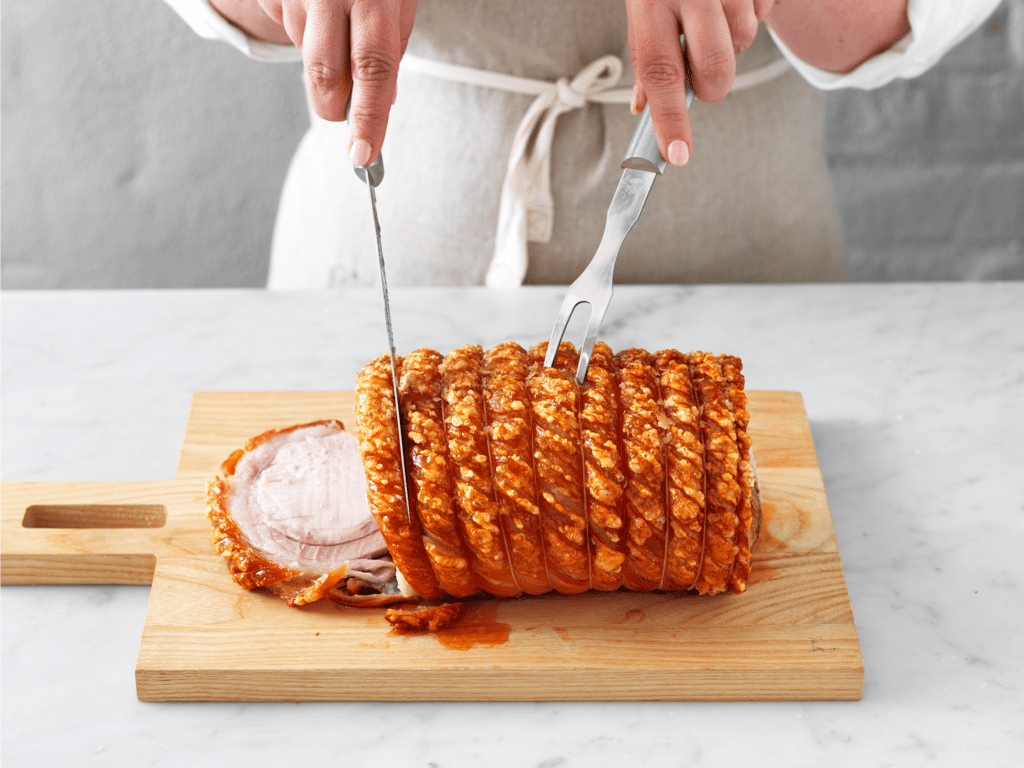
What size roast should you choose?
Use this as a guide to help you select your roast.
| Bone-in roast | Generally approx. 3.5 – 4kg | Feeds about 10 – 12 people |
| Boneless roast | Generally approx. 1.5 – 2kg | Feeds about 6 – 8 people |